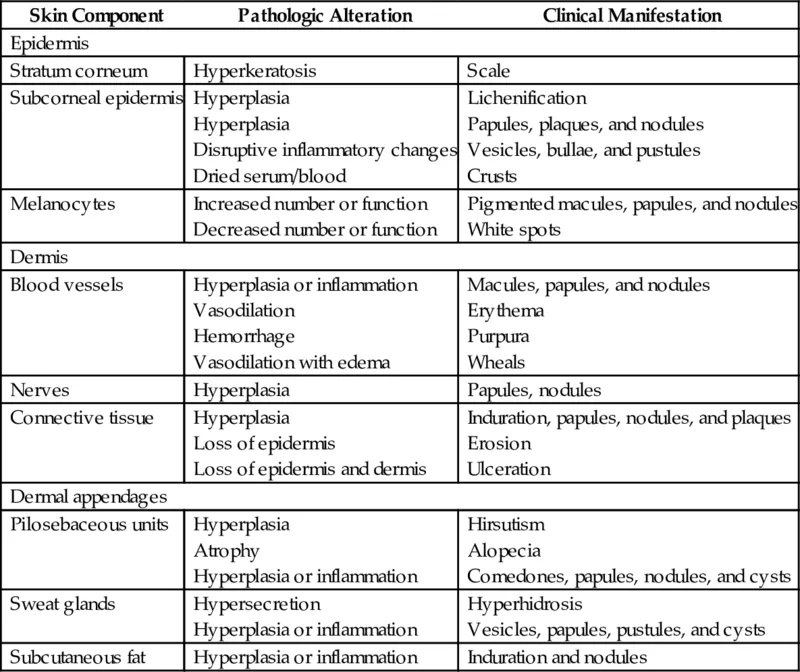
eBook - ePub
Lookingbill and Marks' Principles of Dermatology E-Book
James G. Marks, Jeffrey J. Miller
This is a test
Share book
- 336 pages
- English
- ePUB (mobile friendly)
- Available on iOS & Android
eBook - ePub
Lookingbill and Marks' Principles of Dermatology E-Book
James G. Marks, Jeffrey J. Miller
Book details
Book preview
Table of contents
Citations
About This Book
Intuitively organized by appearance rather than etiology, Lookingbill and Marks' Principles of Dermatology, 6th Edition, by Drs. James G. Marks, Jr. and Jeffrey J. Miller, is a concise, abundantly illustrated everyday reference for dermatologic diagnosis and therapy. It offers expert guidance and overviews of essential information in dermatology, including key points, clinical pearls, differential diagnosis, and tables of first- and second-line treatments. Superb clinical photographs, full-color histopathology images, and corresponding cross-sectional line diagrams provide details on cause and condition.
- Features new and expanded evidence-based treatment tables to keep you up to date with fast-changing treatments in dermatology and guide you toward the best treatments for your patients.
- Offers new coverage of common drug eruptions, as well as the latest therapies for common, difficult-to-treat skin disorders, such as acne, psoriasis, and eczema.
- Includes a more diverse range of skin color patient images throughout.
Frequently asked questions
How do I cancel my subscription?
Can/how do I download books?
At the moment all of our mobile-responsive ePub books are available to download via the app. Most of our PDFs are also available to download and we're working on making the final remaining ones downloadable now. Learn more here.
What is the difference between the pricing plans?
Both plans give you full access to the library and all of Perlego’s features. The only differences are the price and subscription period: With the annual plan you’ll save around 30% compared to 12 months on the monthly plan.
What is Perlego?
We are an online textbook subscription service, where you can get access to an entire online library for less than the price of a single book per month. With over 1 million books across 1000+ topics, we’ve got you covered! Learn more here.
Do you support text-to-speech?
Look out for the read-aloud symbol on your next book to see if you can listen to it. The read-aloud tool reads text aloud for you, highlighting the text as it is being read. You can pause it, speed it up and slow it down. Learn more here.
Is Lookingbill and Marks' Principles of Dermatology E-Book an online PDF/ePUB?
Yes, you can access Lookingbill and Marks' Principles of Dermatology E-Book by James G. Marks, Jeffrey J. Miller in PDF and/or ePUB format, as well as other popular books in Médecine & Dermatologie. We have over one million books available in our catalogue for you to explore.
Information
Section 1
Principles of Dermatology
1
Introduction
Skin diseases are common and a significant number of outpatient visits are for dermatologic complaints. A minority of these patients are seen by dermatologists; most of the remainder are seen by primary care physicians and physician extenders. In a survey of the family practice clinic at the Pennsylvania State University College of Medicine, we found that dermatologic disorders constituted 8.5% of diagnoses. The incidence is higher in a pediatric practice, in which as many as 30% of children are seen for skin-related conditions.
Although thousands of skin disorders have been described, only a small number account for most patient visits. The primary goal of this text is to familiarize the reader with these common diseases. Some uncommon and rare skin disorders are covered briefly in this book to expand the readers’ differential diagnosis.
Our diagnostic approach divides skin diseases into two large groups: growths and rashes. This grouping is based on both the patienťs presenting complaint (often a concern about either a skin growth or a symptom from a rash) and the pathophysiologic process (a growth represents a neoplastic change and a rash is an inflammatory reaction in the skin). Furthermore, the correlation between the clinical appearance of the disorder and the pathophysiologic processes responsible for the disease facilitates making the diagnosis and selecting the proper treatment.
Growths and rashes are then subdivided according to the component of skin that is affected. Growths are divided into: epidermal, pigmented, and dermal proliferative processes. Rashes are divided into those with and those without an epidermal component. We also have chapters dedicated to ulcers, disorders of the hair, nails, mucous membranes, and skin signs of systemic disease. A self-assessment chapter at the end of the text provides the learner an opportunity to reinforce diagnostic and treatment principles.
WHAT IS IT?

OR

2
Structure and Function of the Skin
Skin disease illustrates structure and function. Loss of or defects in skin structure impair skin function. Skin disease is discussed in more detail in the other chapters.
Epidermis
Table 2.1
Skin Functions
| Function | Responsible Structure |
| Barrier | Epidermis |
| ● Physical | ● Stratum corneum |
| ● Light | ● Melanocytes |
| ● Immunologic | ● Langerhans cells |
| Tough flexible foundation | Dermis |
| Temperature regulation | Blood vessels |
| Eccrine sweat glands | |
| Sensation | Nerves |
| Grasp | Nails |
| Decorative | Hair |
| Unknown | Sebaceous glands |
| Insulation from cold and trauma | Subcutaneous fat |
| Calorie reservoir | Subcutaneous fat |
The epidermis is divided into four layers, starting at the dermal junction with the basal cell layer and eventuating at the outer surface in the stratum corneum. The dermal side of the epidermis has an irregular contour. The downward projections are called rete ridges, which appear three-dimensionally as a Swiss cheese-like matrix with the holes filled by dome-shaped dermal papillae. This configuration helps to anchor the epidermis physically to the dermis. The pattern is most pronounced in areas subject to maximum friction, such as the palms and sol...
